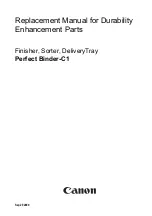
18
Notices
DISPERSED ALARM
Approval:
This product is marked with a CE mark and constitutes a Class 1.2 device.
The whole dispersed system has been designed to comply with EN50134 series of European Norm standards specific to Social
Alarms.
The product exceeds the requirement for Electromagnetic Compatibility (EMC) standard BS EN 50130 part 4; which sets criteria for
EMC Immunity for components of fire, intruder and social alarm systems.
Intended Use:
The product is intended to be connected either to an analogue single PSTN line or a compatible PABX as an extension
instrument. It cannot be guaranteed that the apparatus will operate under all conditions of connection to compatible PABX’s.
The supported features are: Pulse / Tone Dialling, Incoming Call Indication,Automatic Call Initiation along with Multiple Repeat Attempts,
Series Connection & Handsfree.
Ringer Equivalence Number (REN) = 1.0.The sum of all the RENs on one line should not exceed 4.
Safety: DO NOT
attempt to open the Lifeline, authorised personnel only should open the unit.
The telephone line must be disconnected before the battery compartment lid is removed.
Only provide power from a 9Vrms, 1A Transformer, part number XD3606004 or XD3606003.
Battery Disposal Policy:
The Lifeline and radio trigger batteries must be disposed of in an approved manner. In the event that the
radio product indicates a ‘battery low’ condition, contact your supplier for details of disposal/product replacement.
RADIO
The radio triggers (and receiver) are in accordance with the specific European Social Alarm radio frequency band allocation (from
869.20 to 869.25MHz).They operate at 869.2125 MHz.
The radio transmitters comply with mandatory radio standards for Short Range Devices (SRD) ETSI EN 300-220:The radio receiver
also conforms and exceeds the mandatory class 1 criteria necessary for
“Highly reliable SRD…serving human life inherent systems.”
Receiver parameters
(typically, in accordance with EN50134-3)
Conducted Sensitivity –111dBm
Field sensitivity 25dBuV/m
Spurious response rejection, out of band >75dB
Adjacent Channel Selectivity 70dB
Intermodulation response rejection 66dB at 3MHz offset
Blocking 87dB
Co- channel rejection –7dB
Transmitter parameters
The transmitter follows a pre programmed cycle leading
A class 2.7 device
to a typical duty cycle class of 1 (<0.1%):
Effective radiated power 100 micro Watts
Frequency error ± 3 kHz maximum
Adjacent channel power <100 nano Watts
Effective range 25 to 50m (into standard alarm telephone)
Intended area for use is Europe
Intended environment is group II- indoor in general with
Expected battery life 20000 operations
intended operating temperature between –10 to +55 Celsius
over 5 years
DECLARATION OF CONFORMITY
We,Tunstall Telecom of Whitley Lodge,Whitley Bridge,Yorkshire, England, DN14 0HR
declare that the Lifeline 400 dispersed alarms conform with the essential requirements of the RTTE directive 1999/5/EC.
Essential radio test suites have been carried out.
Model Numbers: 370ab/xy0 ab = territory variant, x = Away or non Away, y = radio transmitter type
Applicable standards:
EMC
EN 55022:1998, EN 55024:1998, EN 61000-3-2:1995, EN 61000-3-3:1995,
ETSI 300-683:1997 (class 1)
Safety
EN 60950:2000
Radio
ETSI EN 300 220-3:(2000-09)
Social Alarm
EN50130-4:1995 + amendment A1:1998
Signed
Technical Director
Date 14 June 2002
Associated Summary Information (02RTTE008A)
The CE mark was first applied in June 2002
!
Lifeline 400 user guide q6 18/2/04 10:57 am Page 19



































